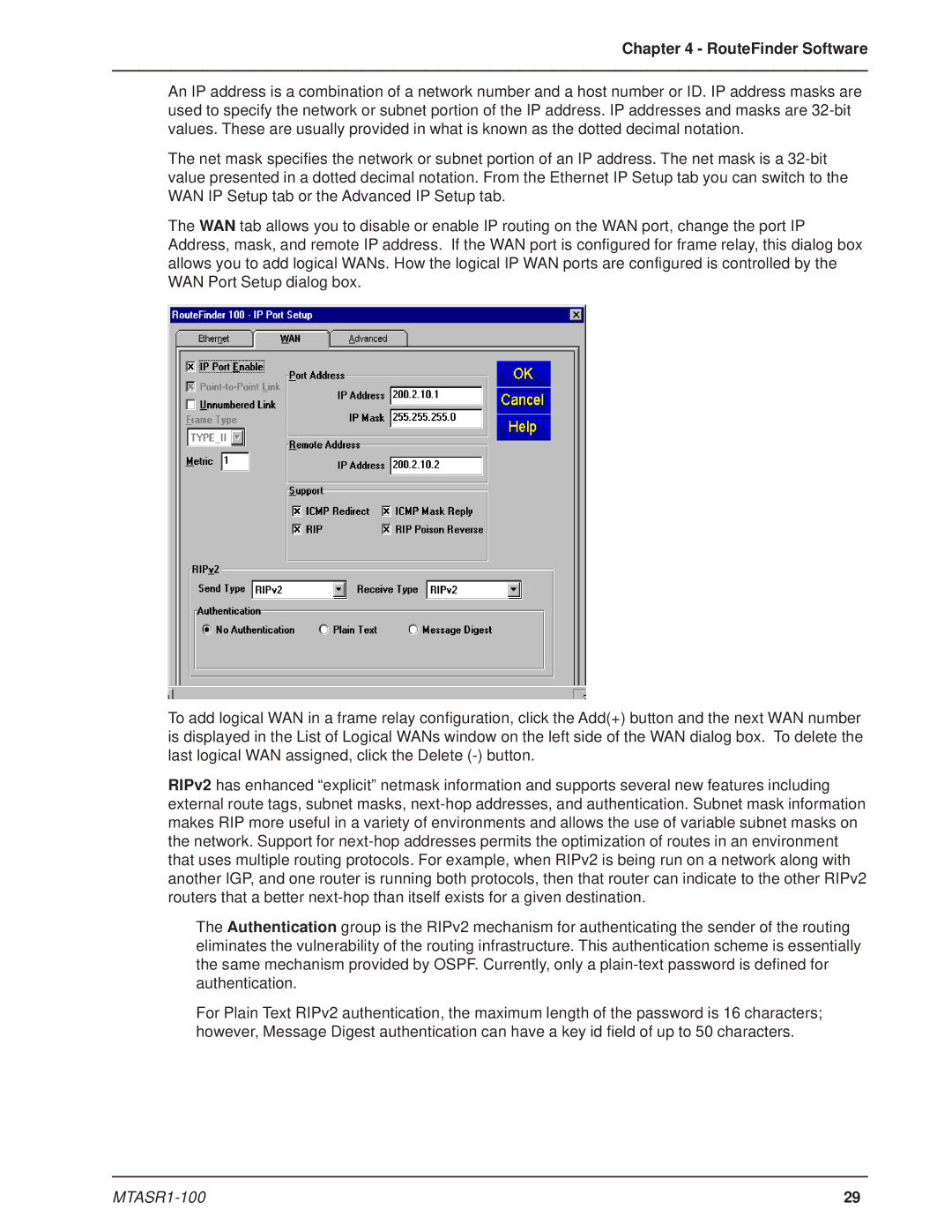
Chapter 4 - RouteFinder Software
An IP address is a combination of a network number and a host number or ID. IP address masks are used to specify the network or subnet portion of the IP address. IP addresses and masks are
The net mask specifies the network or subnet portion of an IP address. The net mask is a
The WAN tab allows you to disable or enable IP routing on the WAN port, change the port IP Address, mask, and remote IP address. If the WAN port is configured for frame relay, this dialog box allows you to add logical WANs. How the logical IP WAN ports are configured is controlled by the WAN Port Setup dialog box.
To add logical WAN in a frame relay configuration, click the Add(+) button and the next WAN number is displayed in the List of Logical WANs window on the left side of the WAN dialog box. To delete the last logical WAN assigned, click the Delete
RIPv2 has enhanced “explicit” netmask information and supports several new features including external route tags, subnet masks,
The Authentication group is the RIPv2 mechanism for authenticating the sender of the routing eliminates the vulnerability of the routing infrastructure. This authentication scheme is essentially the same mechanism provided by OSPF. Currently, only a
For Plain Text RIPv2 authentication, the maximum length of the password is 16 characters; however, Message Digest authentication can have a key id field of up to 50 characters.
29 |
